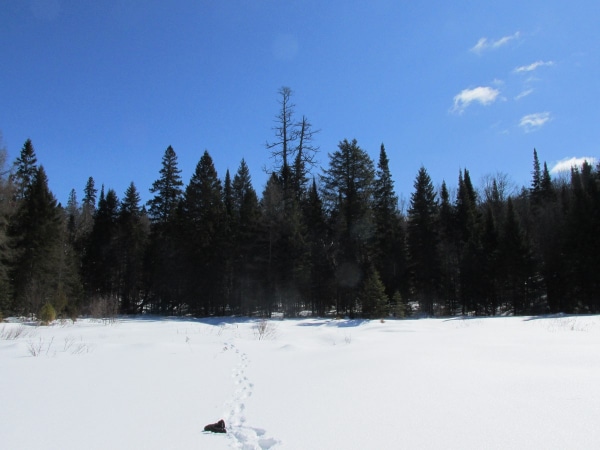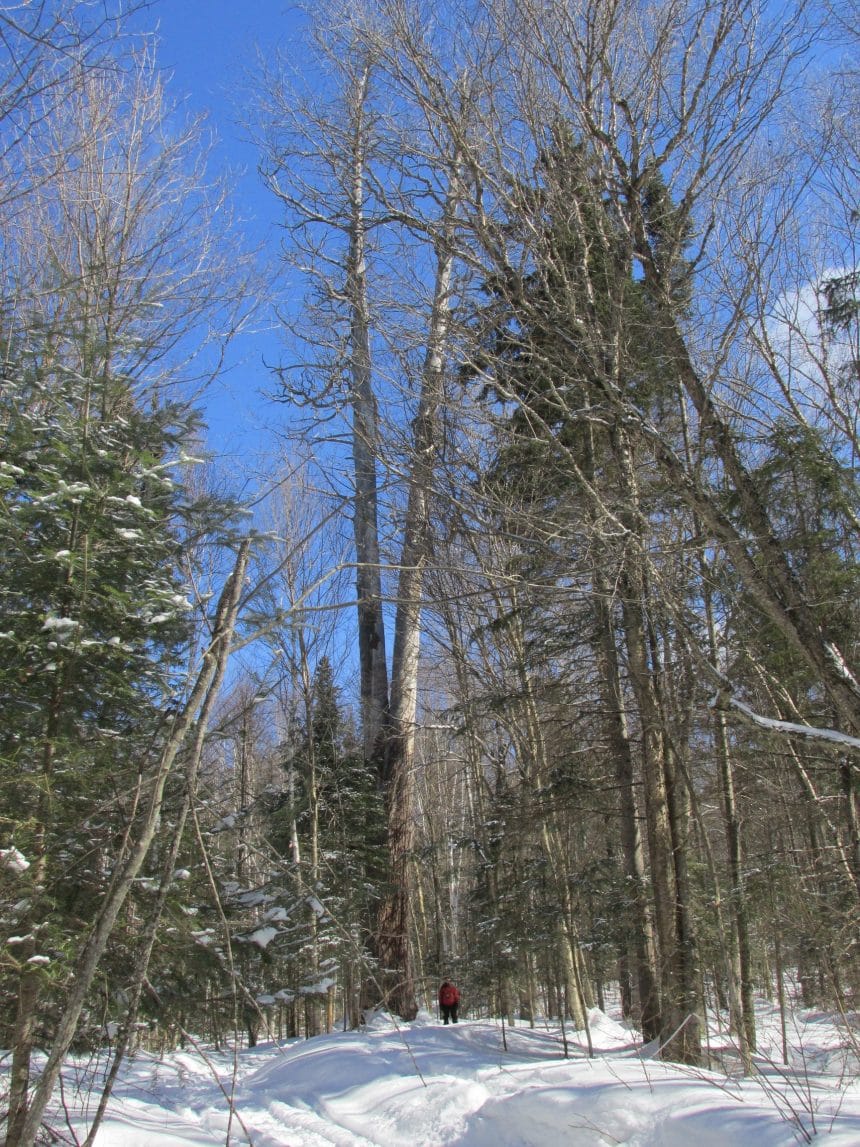The tallest eastern white pine in the province calls Haliburton Forest its home!
Here at Haliburton Forest we really know how to take advantage of the season. Winter is particularly advantageous because it allows us access to sites that are otherwise impassable. Take, for example, the tallest eastern white pine in Ontario. It happens to reside on Haliburton Forest property, but it also happens to reside in a giant swamp. This is atypical for white pines, although they frequent sphagnum bogs, they aren’t often located in a swampy marsh and tend to prefer moist sandy or loamy (mixture of sand, silt and clay) soils with full sun.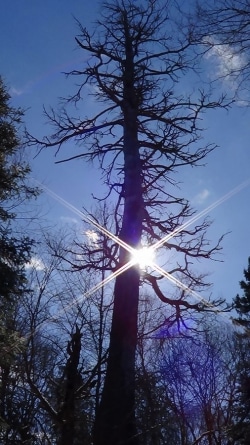
Terrain that would make for a challenging multi-day summer hike eases up when the snow falls and swamps freeze, allowing for a beautiful snowmobile ride across lakes and meandering along the hydro line before the trail narrows considerably into the valley this pine calls home. Many thanks to local cottager Jim Richert who groomed a trail into the tree, escorted us and answered any questions we had about its history. It is traditional, in the tree world, to give names to large or otherwise impressive trees. We have decided to call this beauty ‘The Monster’ due to its massive size. And massive it is, the circumference measures a whopping 5.7m or 18.7 feet!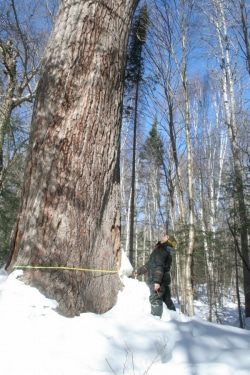 According to Mr. Richert, the tree perished sometime in the late 1970’s. The bark has been shed from all but the lower 15m or so (50 ft) of the trunk and one of the leaders has since broken off. It can be presumed that the failed leader was the taller one, as data collected on this tree in 1975 measured it 45m (147 ft) tall and our readings from this winter estimate it at 43m or 141 ft. As far as we know this still makes it the tallest white pine in Ontario, however there is a lot of forest to explore in our great province! Diameter at breast height (DBH) is a standardized measurement taken at 1.3m (about 4 ft) above the ground. In 1975 The Monster’s DBH was 172 cm, today it is 173, furthering the notion that the tree died shortly after 1975.
According to Mr. Richert, the tree perished sometime in the late 1970’s. The bark has been shed from all but the lower 15m or so (50 ft) of the trunk and one of the leaders has since broken off. It can be presumed that the failed leader was the taller one, as data collected on this tree in 1975 measured it 45m (147 ft) tall and our readings from this winter estimate it at 43m or 141 ft. As far as we know this still makes it the tallest white pine in Ontario, however there is a lot of forest to explore in our great province! Diameter at breast height (DBH) is a standardized measurement taken at 1.3m (about 4 ft) above the ground. In 1975 The Monster’s DBH was 172 cm, today it is 173, furthering the notion that the tree died shortly after 1975.
My first venture to the tree was one of the more exciting times in my tenure here and I was awake long before my alarm itching with anticipation. I tried to prepare myself for the wonder I was about to feel, however preparation usually fails in that department. It’s slightly unfair (for a tree nerd at least) that The Monster sits in a valley because you can’t get an appreciation for its size until you get very close to it. I expected to pick it out in the landscape far ahead of time and track it as we got closer. The first glimpse you get is at the top of the valley (or swamp is the better term) that it calls home. From there the beholder is greeted with gnarly, dead and barkless branches twisting out in every direction. The Monster shows as a typical pine with double leader formation – mature white pines tend to have 2-3 main stems at the top. As you reach the bottom of the swamp, the true magnitude of The Monster takes you and leaves you breathless. It was difficult to concentrate on parking my snowmobile as the awe overwhelmed me; I could hardly wait to wade through the snow and run my fingers over the furrowed bark. Standing at the bottom of this great creature, staring up at its limbs and impressiveness, I was overtaken by how long this tree has held root in an unlikely home, how many loggers passed it over in times of clear cutting (presumably because it would be too difficult to haul out of there), whether or not those loggers would have found this specimen remarkable in comparison to the giants that would have been all around them at that time, how many birds and other animals took refuge in or under it and how many more people would be lucky enough to ponder these wonders before it succumbs to failure.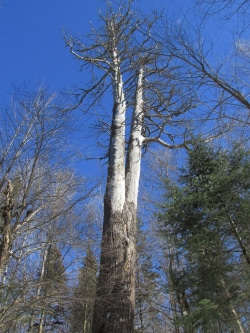
Large trees are quantified in a number of ways; the most prevalent being height, diameter and volume. So while The Monster is the tallest Eastern white pine in Ontario, it may not necessarily be the widest. Another pine can easily be named the tallest living white pine in the province, but The Monster will forever hold a place in history at Haliburton Forest. The day it falls, I hope it is heard throughout the forest and felt in the hearts of those who have been captivated by it, surely it deserves that send off after surviving approximately 450 years in an improbable site. To put that in perspective, the tree germinated long before Canada was declared a country, around 1564, which is the year that William Shakespeare and Galileo were born and the year that Michelangelo died. In our anthropogenic delusion it is easy to forget that the forest has been around much longer than we have, especially in a relatively young forest such as Haliburton Forest. There are a few pockets of old growth areas that make it seem as though you’ve stepped back in time, and then there is the tallest eastern white pine in Ontario. It is amazing, really, that the tallest white pine in the province would remain in an area that was so heavily logged before the current management regime took over, but there it stands serving as a reminder of what humanity has accomplished in those 450 years, the effects we’ve had on the forest and, mostly, the resilience of nature shown by an exquisite monstrosity growing against all odds.
